Key takeaways
- Music analytics platforms provide insights into streaming metrics, audience demographics, and listener engagement, helping artists make informed marketing decisions.
- Understanding and adapting to audience preferences can significantly enhance an artist’s connection with fans and overall engagement.
- User-friendly interfaces and real-time data tracking are crucial when selecting the right analytics platform for effective music promotion.
- Engaging with listeners and gathering feedback can complement data analysis, providing a deeper understanding of audience sentiments and improving creative decisions.
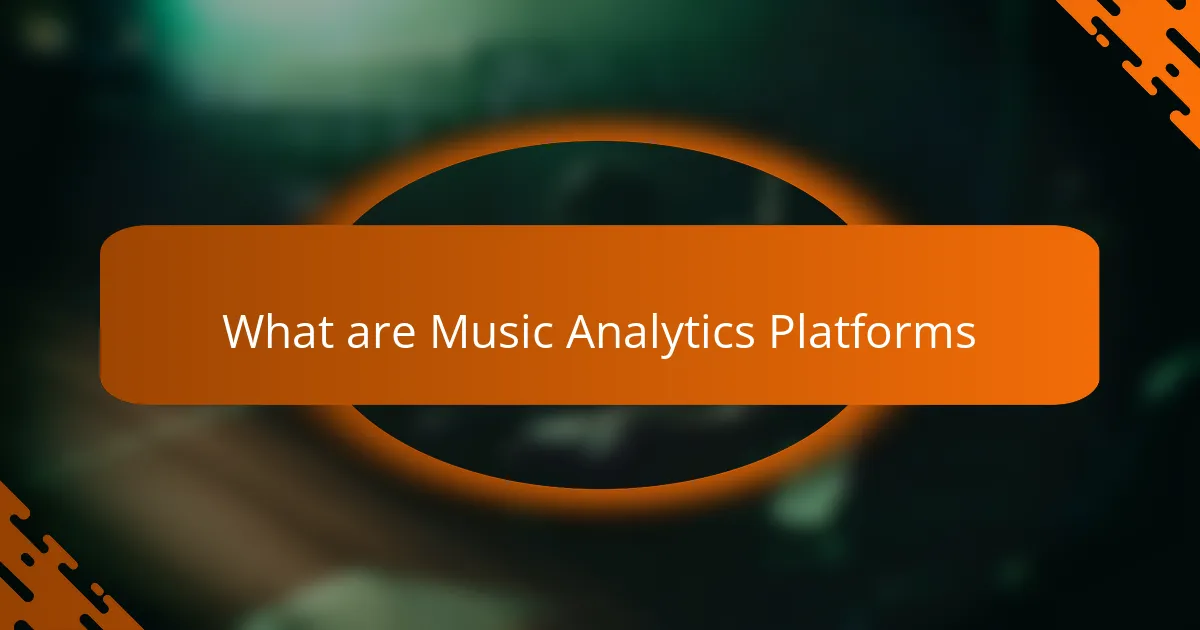
What are Music Analytics Platforms
Music analytics platforms are powerful tools that give musicians valuable insights into their audience and performance. From my experience, they help track streaming data, reveal demographics, and analyze listener behavior, which can inform decisions about marketing and new releases. I remember when I first started using one of these platforms; the data opened my eyes to who was connecting with my music and where my strongest fan base was located.
These platforms provide several essential features:
– Streaming Metrics: Track plays, skips, and engagement rates on various music platforms.
– Audience Insights: Understand demographics such as age, gender, and geographical location of listeners.
– Playlist Additions: Monitor which playlists are featuring your tracks and how that affects listener growth.
– Social Media Monitoring: Analyze how your audience engages with your music on social media platforms.
– Sales Performance: Review sales data for singles and albums across different markets.
Utilizing these features can significantly enhance your music career, as I found out when I tailored my promotional strategies based on the insights gained.
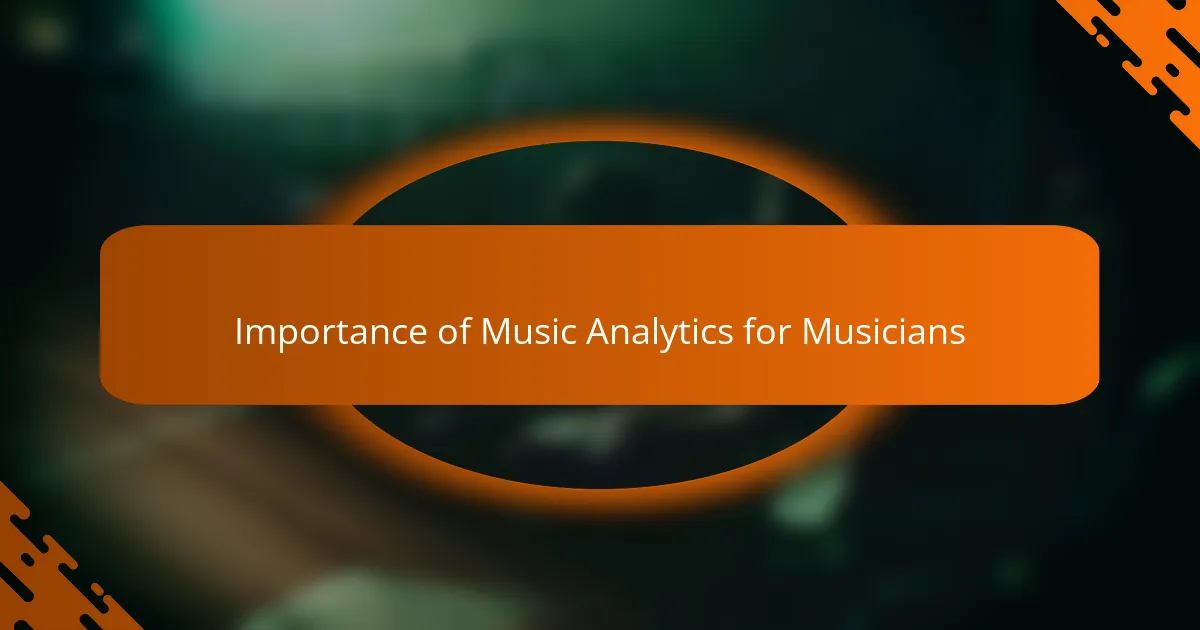
Importance of Music Analytics for Musicians
Understanding music analytics is crucial for musicians striving to grow their careers in a competitive industry. By analyzing data, I can pinpoint which songs resonate most with my audience and identify trends in listening habits. This insight not only shapes my creative decisions but also informs my marketing strategy.
Moreover, music analytics platforms empower artists like me to connect with fans on a deeper level. For instance, I once realized that a certain track gained unexpected traction in a specific region. This motivated me to engage with that audience, ultimately resulting in a memorable live performance that strengthened my fanbase.
Here’s a simple comparison table that outlines some key aspects of popular music analytics platforms:
| Feature | Platform A | Platform B |
|---|---|---|
| Real-time data tracking | Yes | No |
| User-friendly interface | Moderate | Easy |
| Insights on listener demographics | Comprehensive | Basic |
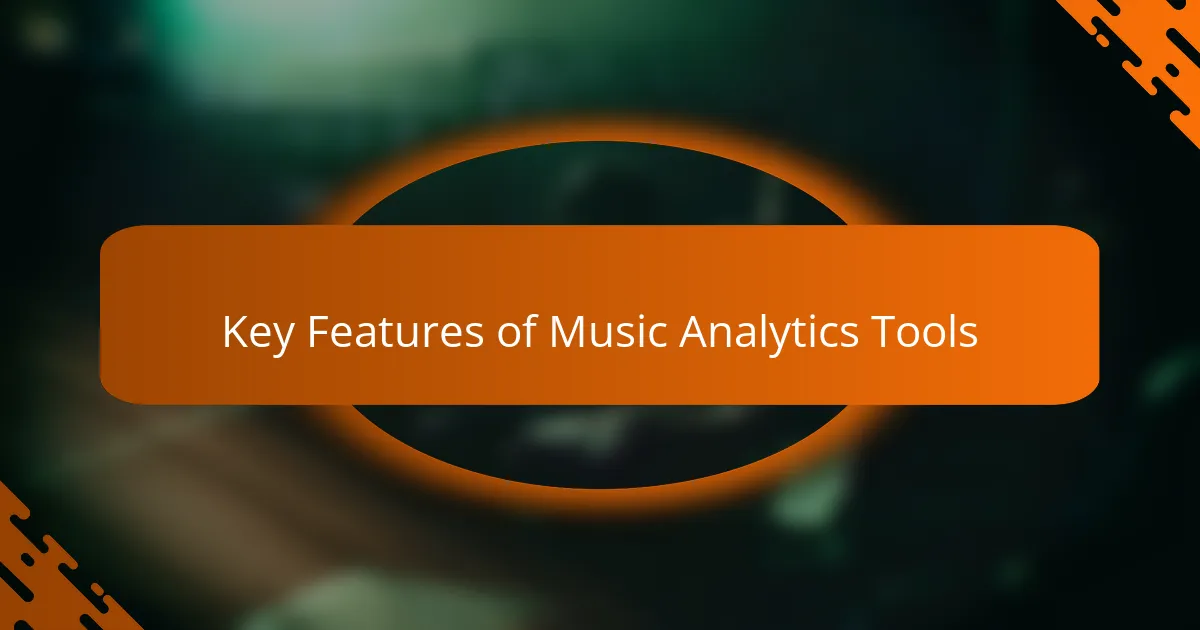
Key Features of Music Analytics Tools
Music analytics tools come equipped with a variety of features that can dramatically impact a musician’s approach to their craft. For instance, streaming metrics are essential. They show not just how many times a track is played, but also engagement rates, which tell you how often listeners return for more. I remember feeling a rush of excitement when I saw a spike in plays; it made me immediately consider how to capitalize on that momentum.
Another standout feature is audience insights. Understanding demographics—like age and geographic location—can be a game changer. It often surprises me how a significant portion of my listeners might come from regions I never expected. When I saw that some of my most engaged fans were in a specific city, it prompted me to plan a tour stop there, leading to an unforgettable show that deepened my connection with those listeners.
Lastly, social media monitoring is absolutely invaluable. It allows you to see how your audience interacts with your music online. I found this feature particularly enlightening when I noticed certain posts about a new release went viral. This moment helped me appreciate the power of community-driven promotion, making me rethink how I engage with fans online. Have you ever noticed how a single post can ignite interest?
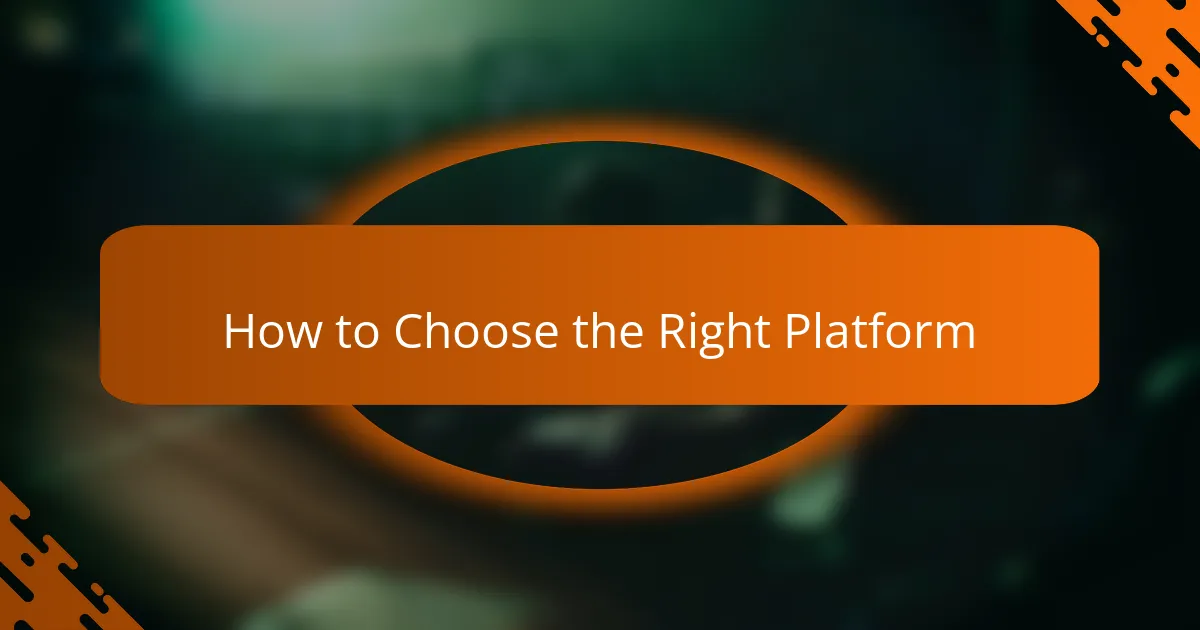
How to Choose the Right Platform
Choosing the right music analytics platform can feel overwhelming, but it’s essential to consider what features matter most to you. For instance, when I was looking for the perfect platform, I prioritized real-time data tracking. It was crucial for me to understand how my latest release was performing as soon as possible, so I could adjust my strategies on the fly. After all, don’t you want to seize every opportunity to connect with your audience immediately?
Another key factor to think about is the user interface. I remember trying out a platform that was packed with features but felt like a maze to navigate. It became more frustrating than helpful. I eventually switched to a platform with a more intuitive layout, which made analyzing my data feel like a breeze. Isn’t it much better to focus on your music instead of wrestling with complicated software?
Lastly, consider how each platform provides insights into your audience. When I discovered that a sizable chunk of my listeners were teenagers from urban areas, it completely reshaped my approach to marketing. I realized I needed to engage with that demographic through the platforms they love. Isn’t that kind of lightbulb moment what we all strive for in our music careers?
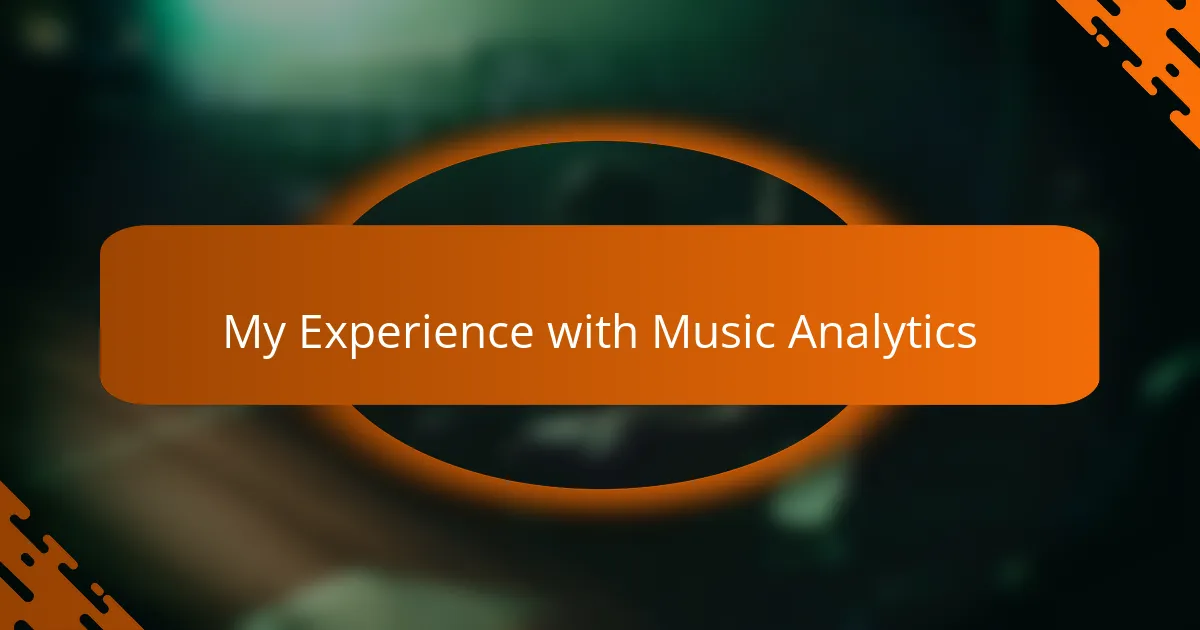
My Experience with Music Analytics
When I first delved into music analytics, I was initially overwhelmed by the vast amount of data available. However, as I began to explore platforms like Spotify for Artists and SoundCloud Analytics, I started to appreciate how these insights could help me forge a deeper connection with my audience. Tracking where my listeners were located and what songs resonated with them changed my approach to creating and promoting my music.
I fondly remember the day I discovered a sudden spike in streams from a city I’d never played in. It sparked curiosity and excitement within me. I felt inspired to plan a show in that location, and it fueled my marketing efforts. The analytics not only guided my music decisions but also built my confidence as an artist.
- Access to real-time data on streams and audience demographics
- Insights into listener engagement, such as skips and saves
- Ability to track geographic locations of my fanbase
- Understanding trends in genre preferences and listening habits
- Opportunities to optimize marketing strategies for upcoming releases
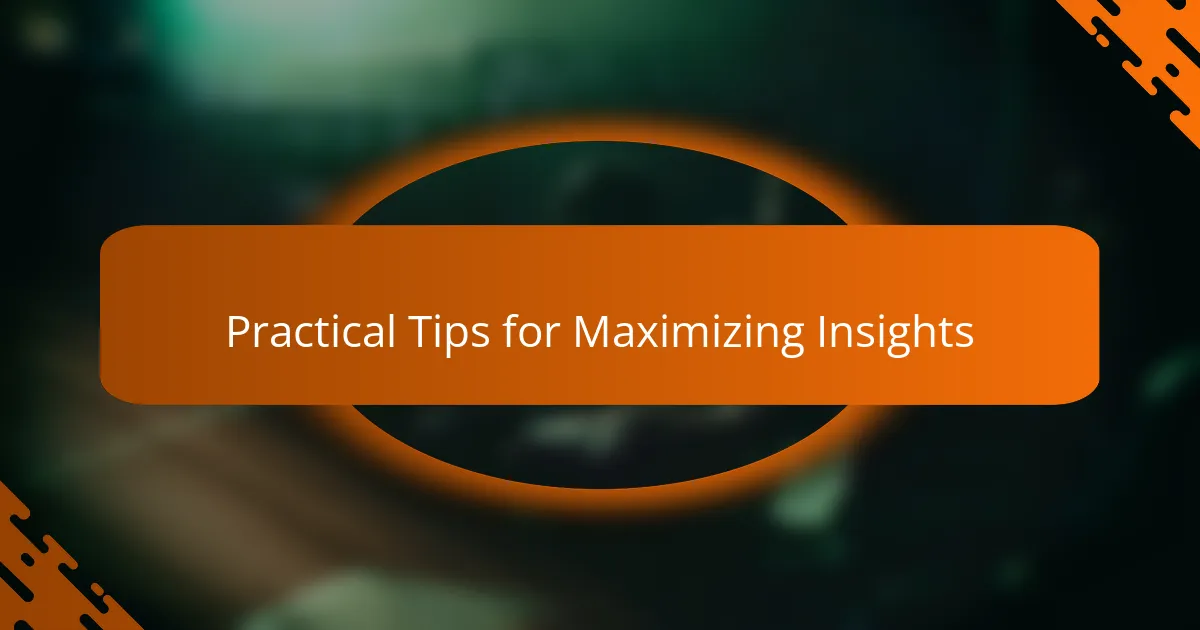
Practical Tips for Maximizing Insights
Analyzing streaming metrics can provide you with a wealth of knowledge about your music’s performance. For example, when I noticed that one of my tracks had a high skip rate, it made me reflect on the song’s structure and emotional impact. Have you ever considered how crucial first impressions can be? Sometimes, a small tweak can transform a song into a fan favorite.
Audience insights are my secret weapon for tailoring content to connect more deeply with listeners. I remember discovering that a large portion of my fans were young adults who loved vibrant visuals. By sharing behind-the-scenes content, I bridged that gap and built more engagement. What’s your favorite way to interact with your fans? Finding that connection can be incredibly rewarding.
Pay close attention to playlist additions and social media buzz. I often track where my songs are featured to understand what resonates with curators and fans alike. Once, a track I released gained significant traction because it landed on a prominent playlist. That moment taught me the importance of nurturing those relationships. Have you reached out to curators or your fanbase recently? Networking can open so many doors in your music journey.
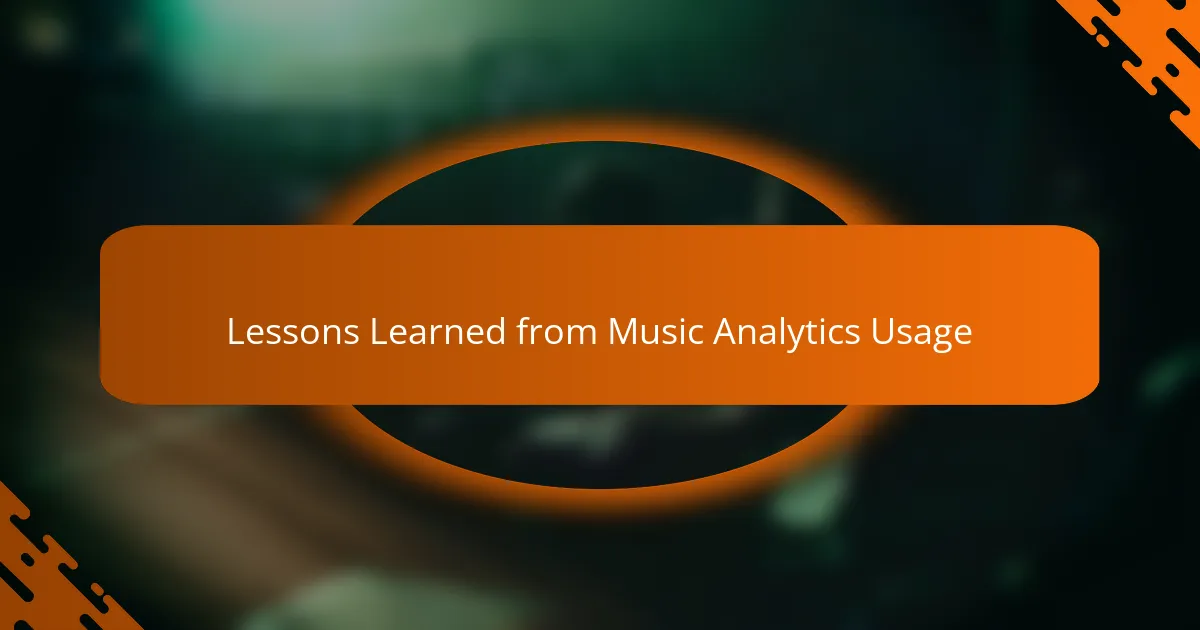
Lessons Learned from Music Analytics Usage
Utilizing music analytics has taught me the value of being adaptable. One lesson that stands out is how quickly audience preferences can shift. I vividly recall a time when a specific genre began trending within my listener base, surprising me. Realizing this, I adjusted my songwriting style to incorporate those elements, resulting in a significant uptick in engagement. Have you ever noticed how your audience’s tastes can change overnight?
Another important insight I’ve gained is the significance of highlighting listener demographics. When I discovered the diverse backgrounds of my audience, it prompted me to create targeted marketing campaigns. For instance, I recently tailored a promotional effort around a song that resonated particularly well with a younger audience. I felt invigorated to connect with them through platforms they frequented. Isn’t it fascinating how understanding who listens to your music can reshape your entire approach?
Lastly, I’ve learned that numbers alone don’t tell the whole story; context matters. I remember when I saw impressive streaming figures for a track, but the engagement metrics were low. This prompted me to investigate further. By reaching out to my listeners and getting their feedback, I was able to pinpoint what they loved—and what they didn’t. How often do we overlook the voices of those who support us? Engaging them can provide invaluable insights that raw data sometimes misses.